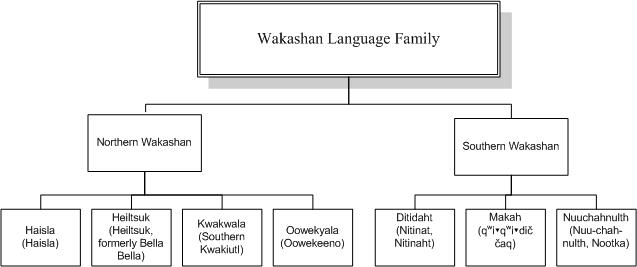Northern Wakashan (Kwakiutlan) languages:
Haisla-Henaksiala (Kitimat, Kitimaat)Heiltsuk (Bella Bella, Heiltsuq)
Oowekyala (Oowekeeno)
Kwakwala (Kwakw’ala, Kwakiutl)
Southern Wakashan (Nootkan) languages:
Nuuchahnulth (Nuu-chah-nulth, Nootka)Ditidaht (Nitinat, Nitinaht)
Makah
